
5 minute read
Penn IUR Photo Contest Finalists
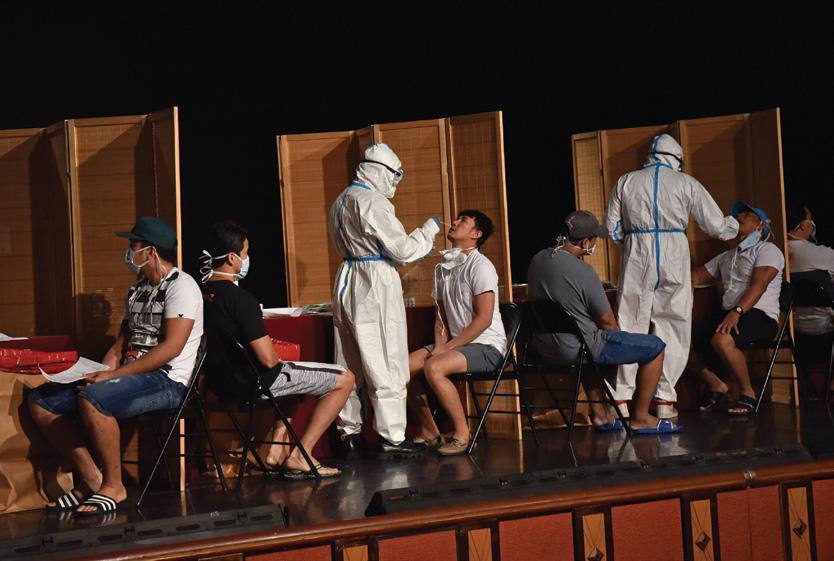
ABOVE: COVID-19 Testing for Filipino Seafarers by Jophel Botero Ybiosa. Medical personnel from the Philippine Coast Guard test seafarers onboard the Sapphire Princess amidst the COVID-19 pandemic. Manila, Philippines; May 8, 2020.
LEFT: Friday Prayer during the Coronavirus Pandemic by Mohammad Rafayat Haque Khan. Jummah (Friday) prayer is an obligation for many Muslims. When the pandemic started Muslim religious scholars had ruled that the obligation was lifted and most mosques cancelled congregational prayer for a while. As some mosques began hosting prayers they would require masks for entry and social distancing to be observed. They also asked that people bring their own rugs, complete their washing for prayer at home and often would use the outside space of the mosque instead of inside. In some cases signing up for limited space has been a requirement. Sylhet, Bangladesh; June 5, 2020.
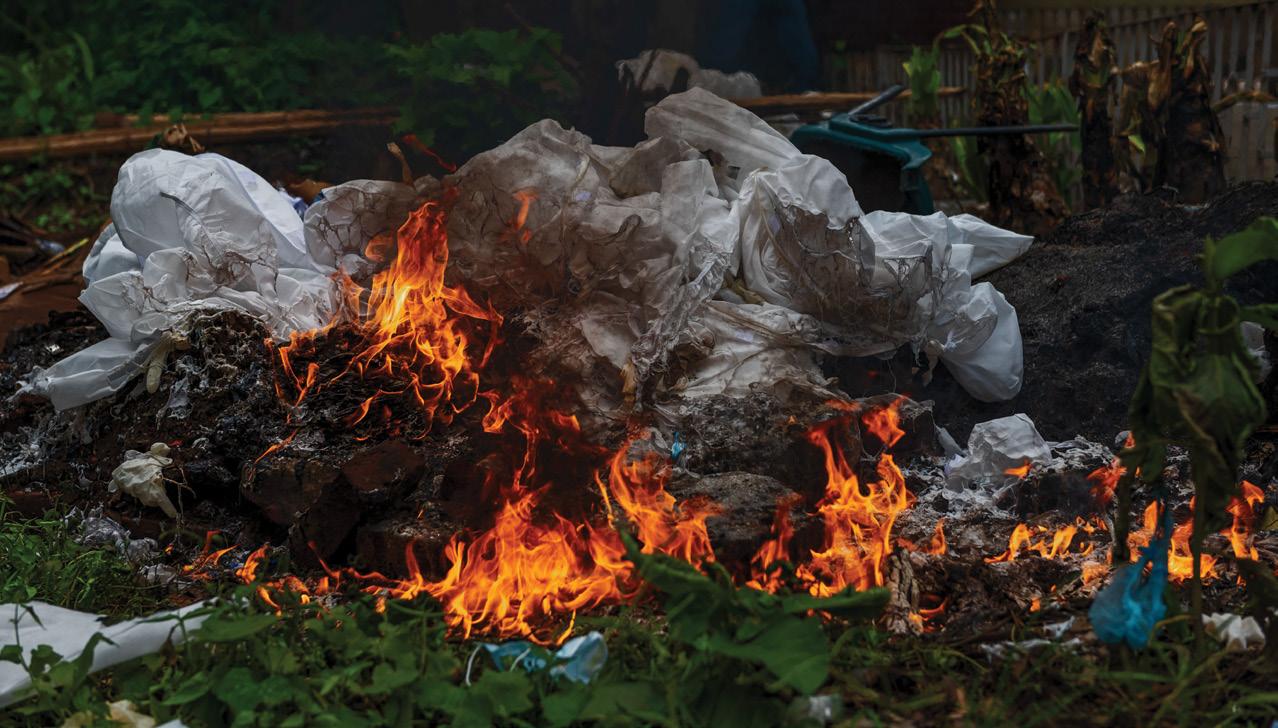
ABOVE: Burning PPE by Hashinur Reza. The abundant PPE is being burnt to protect people from COVID transmission. Bangladesh; June 24, 2020.
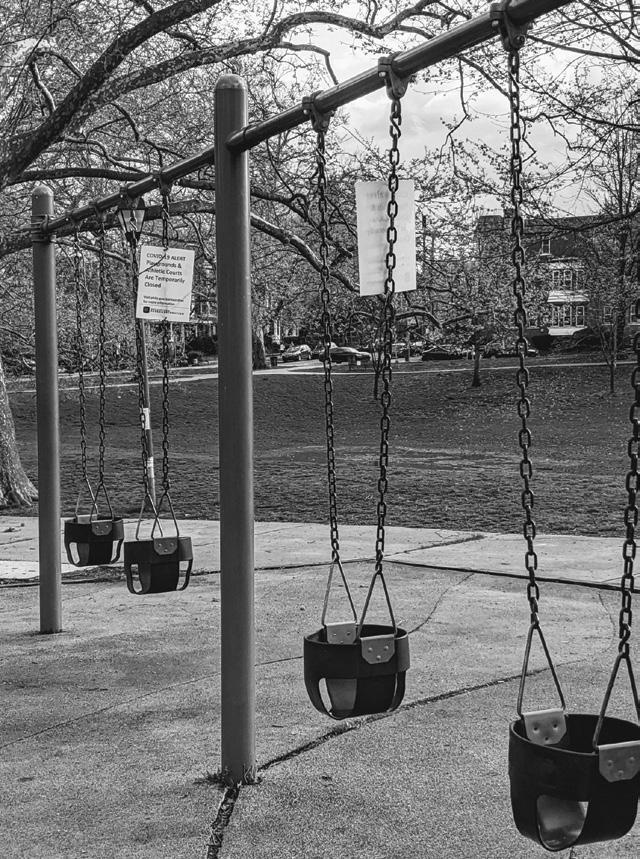
ABOVE: Silent Swings by Lauren Bridges. Clark Park, West Philadelphia; April 13, 2020.
RIGHT: Bus Ride by Dereck Mangus. Baltimore, Maryland; July 2020.
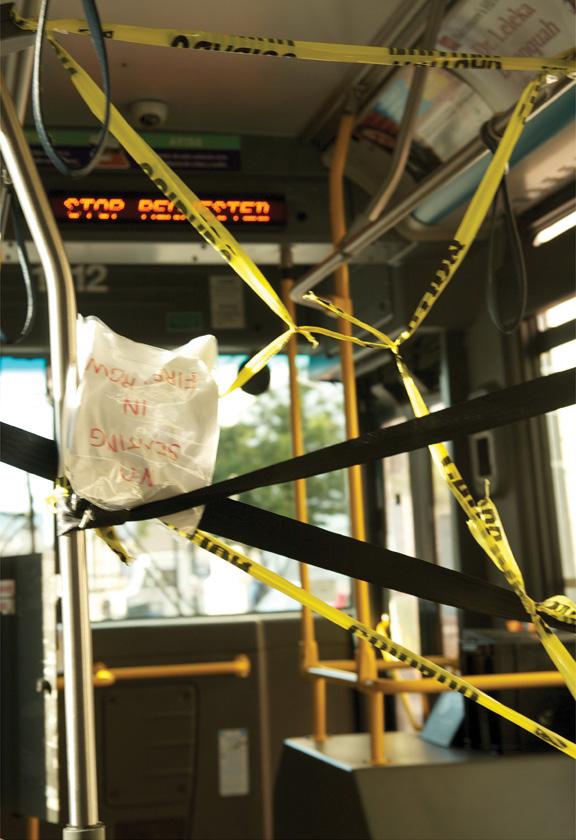
RIGHT: Stillness by Michael Chambers. Barren and unaffected, the stripped basketball court portrays a seeming stillness that balances the discord and turbulence of the new normal. Schuylkill River Park, Philadelphia, Pennsylvania; April 15, 2020.
BELOW: The COVID Hero by Mithail Afrige Chowdhury. A cleaner from Dhaka North City Corporation spraying disinfectant at the Farmgate street market. Dhaka, Bangladesh; May 23, 2020.
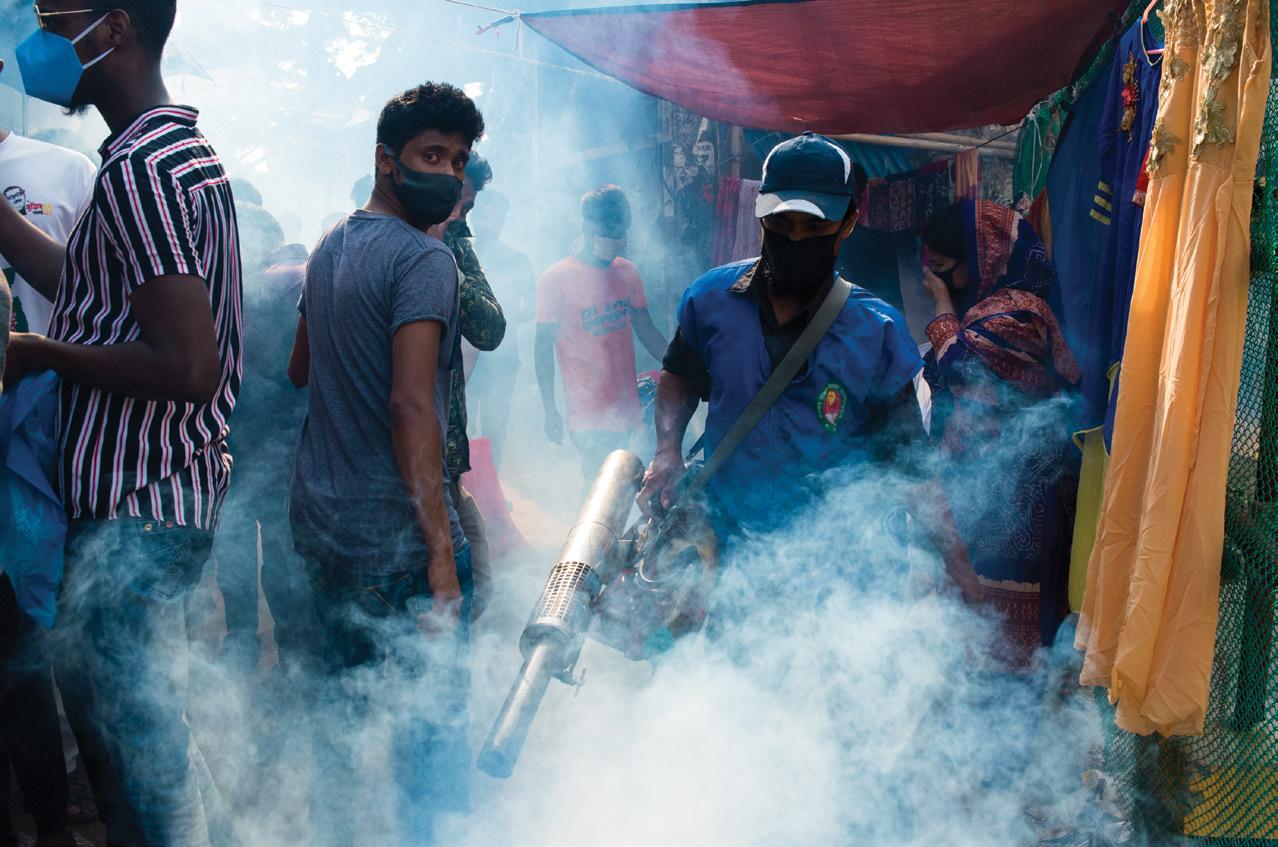


ABOVE: Boats in Quarantine by Azim Khan Ronnie. Hundreds of boats are resting in peace because people are in self-quarantine with their families. Dhaka, Bangladesh; March 27, 2020.
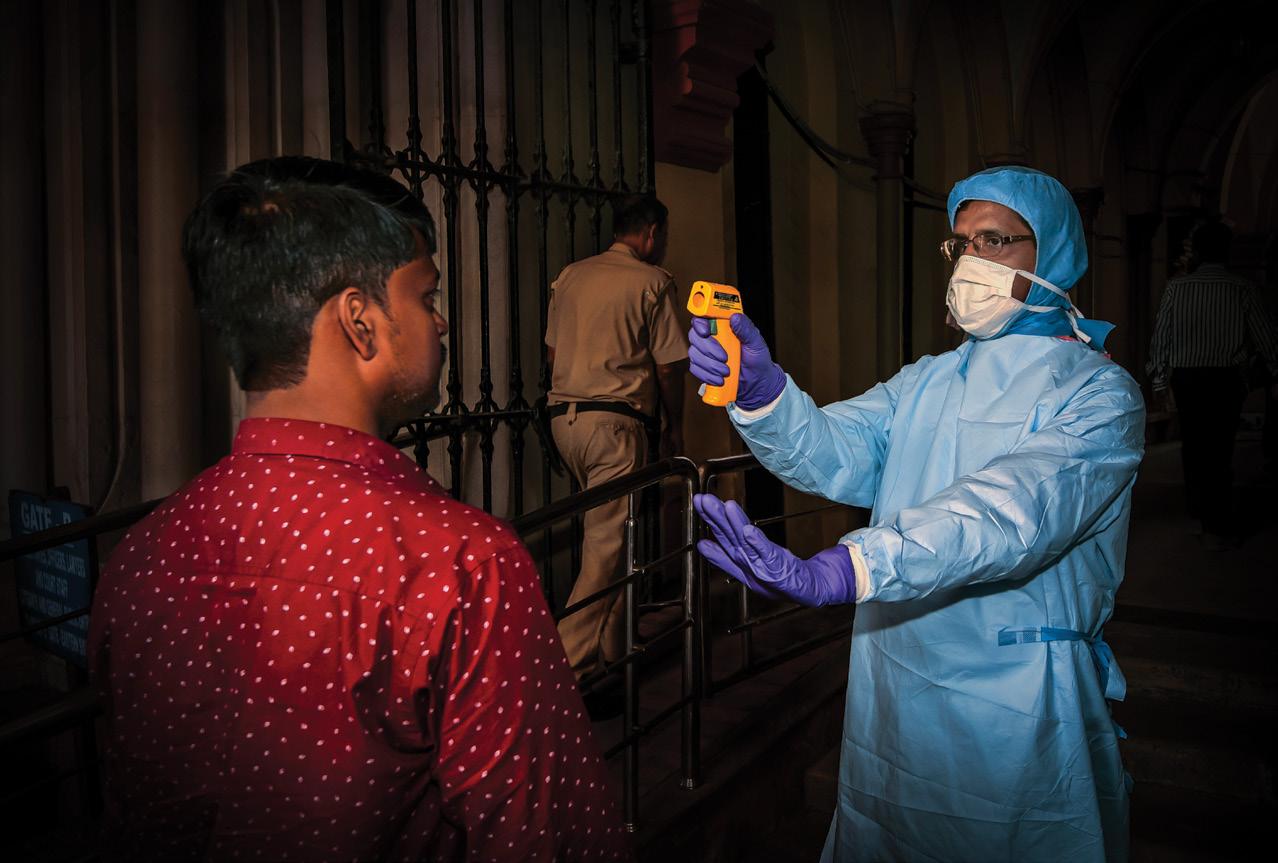
ABOVE: Thermal Checking at the Gates by Debdatta Chakraborty. Thermal checking at the gates of government offices and institutions has become mandatory under the new normal situation. Bangladesh; June 29, 2020.
Borrowers in neighborhoods with increased
flood risk “may face both the inability to repay
their mortgage, and the inability to recoup
enough funds when selling their house to
cover the unpaid mortgage principle.”
National Flood Insurance and Mortgage Markets In 2019–20, Penn IUR continued its work with the Wharton Risk Management and Decision Processes Center to study flood risks, including the effects of climate change on housing markets and the extent to which the nation’s housing and mortgage finance markets are exposed to flood risk. In the September 27, 2019 article “Climate Risk in the Housing Market Has Echoes of Subprime Crisis, Study Finds,” the New York Times quoted the Penn IUR paper, “Flood Risk and the U.S. Housing Market,” that found while coastal flooding is likely to inundate a small share of homes in the United States, the effects on home default rates could be felt widely. “An increase in the vacancy rates, neighborhood blight and lack of amenities will exacerbate the decline in property values,” the authors of the paper found. The paper notes that borrowers in these neighborhoods “may face both the inability to repay their mortgage, and the inability to recoup enough funds when selling their house to cover the unpaid mortgage principle.” An expanded version of the paper, co-authored by Penn IUR Co-Director Susan Wachter, Penn IUR Faculty Fellow Howard Kunreuther and Penn IUR Scholar Carolyn Kousky from the Wharton Risk Center and Michael LaCour-Little from Fannie Mae, identifies policy options and additional areas of needed research. The paper will be published as a lead article in a forthcoming issue of the Journal of Housing Research. A follow-on Penn IUR working paper, “Mortgage Stress Without GSEs. Lessons From Hurricanes and the Credit Risk Transfers,” by Wachter and co-authors Pedro Gete and Athena Tsouderou of IE Business School examines how private capital in mortgage markets price credit risk from floods.

Shared Prosperity in Urban America In 2019–20, Penn IUR focused on issues surrounding the modernization of the Community Reinvestment Act (CRA), with Penn IUR convening experts to evaluate the impacts proposed changes to the CRA would have on the intended mission of the law to combat redlining and discrimination in mortgage markets. As part of this effort, Penn IUR CoDirector Susan Wachter co-edited with Lei Ding, Senior Economic Advisor for Community Development, Federal Reserve Bank of Philadelphia, a January 2020 special volume of Housing Policy Debate (see page 39 for a listing of papers) that considers the impact and efficacy of the CRA and new regulatory approaches to overcome discrimination in mortgage markets. In September 2019, Penn IUR published these articles as working papers and also published a Penn IUR Brief by Jacob Krimmel and Susan Wachter entitled “The Future of the Community Reinvestment Act,” which summarizes the papers, and featured this topic in Urban Link. In addition, Penn IUR published “Modernizing the CRA (While Preserving Its Spirit),” a Penn IUR Brief that summarizes the issues covered at the October 2019 Penn IUR–Wharton Public Policy Institute (PPI) event in Washington, D.C., featuring Senator Sherrod Brown and two panels of experts (see “Expert Convenings,” page 64, for more on the Penn IUR–Wharton PPI event). The Committee on Financial Services for the U.S. House of Representatives requested a statement for the record (excerpted on page 50) based on this work.
As part of the Shared Prosperity in Urban America initiative, Penn IUR and the Federal Reserve Bank of Philadelphia also prepared to launch the Research for Equity in Recovery webinar series to bring together experts to discuss the latest research and best practices for promoting a strong and equitable recovery in response to the COVID-19 pandemic.





